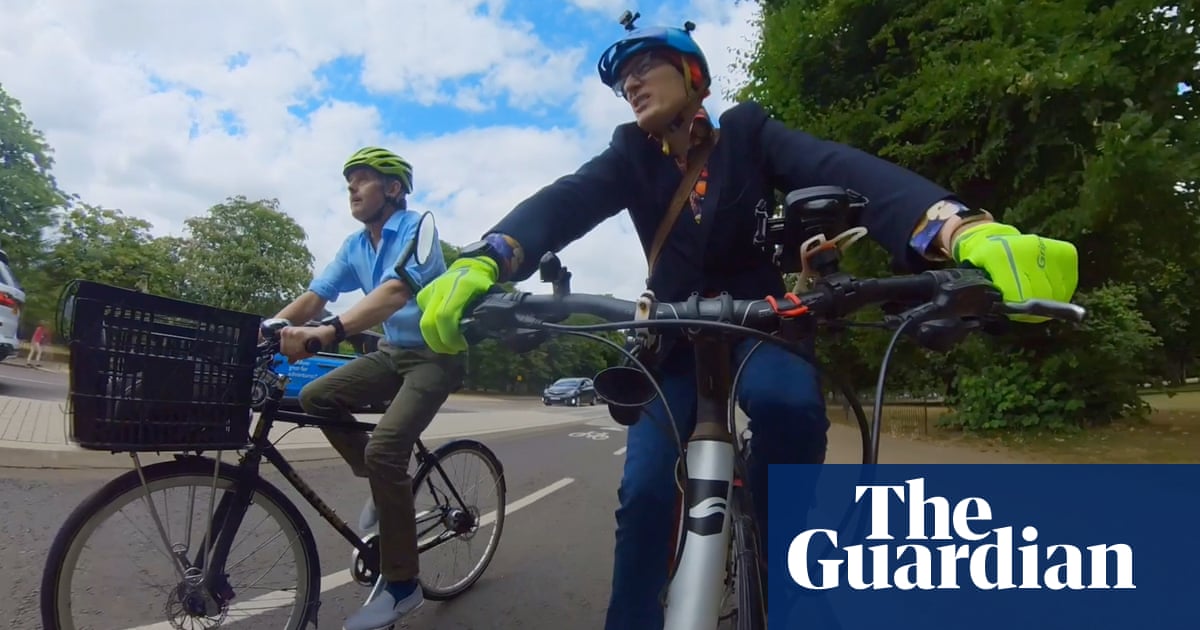For many cyclists, Jeremy Vine’s commitment to filming drivers he regarded as endangering his fellow two-wheeled travellers made him a hero. It also made the presenter the target of some extraordinary online hate from those who accused him of persecuting motorists.
After years ofdocumenting clashes and close shaves on the road, Vine has announced he is ending his sharing of footage, saying the fallout they generated had become too hard to bear. “I’m stopping my cycling videos,” he announced. “The trolling just got too bad. They have had well over 100m views but in the end the anger they generate has genuinely upset me.”
He said a “regular theme” had been an apparent desire by some online attackers to see him “crushed under a truck”, something he described as a “very real danger” to commuting cyclists.
Vine accompanied his announcement with posts he had received from angry critics. One stated he was “beyond hated” and asked him to upload another video “if it’s you getting run down and hospitalised”. Another said they hoped the next motorist he confronted “kicks your traitor head in”. A third said: “It may be terrible but I hope he falls under the wheels of five cars that reverse and make sure the job’s done.”
The BBC Radio 2 andChannel 5host said his aim had been to make drivers think about the dangers of trying to navigate a busy city on a bike. He admitted he could get a “little cross when a driver has, say, pulled out without looking”, but said he had only ever uploaded the videos to highlight the dangers involved.
Vine said his decision to stop the recordings followed the theft of his bike last week – an incident also captured on camera and posted online. “Do I want to get a replacement and go back into the trolling-furnace? As I say, it just got too hot,” he said. “A new cycle video would make my phone physically heat up in my pocket. There are at least two death threats against me currently being investigated by police.
“I enjoy debates but not abuse. It’s strange that getting interested in road safety can actually endanger a person. I see other cyclists facing the same and wonder how they deal with it. So when I get my new bike I’ll stay vigilant but won’t share my adventures.”
Vine’s latest and perhaps last video appears to show a taxi dropping off a passenger directly into a cycle lane – a move that prompted Vine to ring his bell in warning, only for the driver to honk his horn back at him. Some of his latest videos featured AI-generated imagery and songs, including one that riffed on a driver telling him he was “drifting to the middle” of a lane.
Sign up toHeadlines UK
Get the day’s headlines and highlights emailed direct to you every morning
after newsletter promotion
In 2017, a driver who beeped her horn and shouted abuse at Vinewas convictedof threatening behaviour and a driving offence. The exchange was captured by Vine’s cameras. He posted it to Facebook, where it was viewed more than 15m times.
“I never made a penny from my videos,” Vine said. “They have gone completely crazy at times. They’ve started debates about whether, for example, you can undertake a vehicle turning left while you are in a cycle lane that is paint-only.
“In a lot of cases the answer is: yes, but don’t do it if you want to stay alive.”
